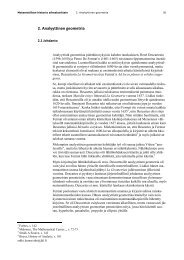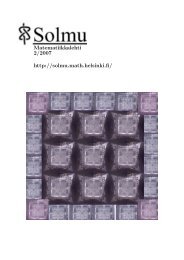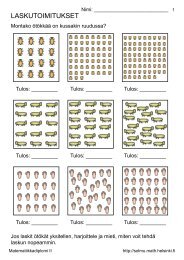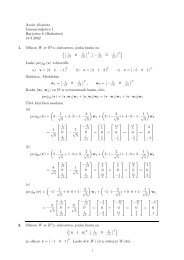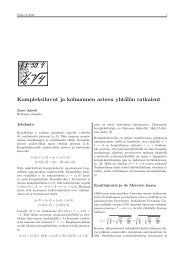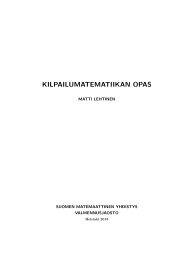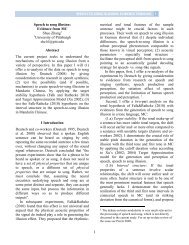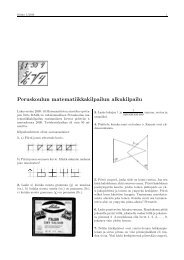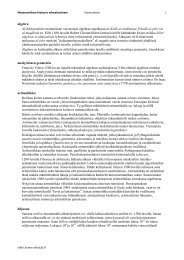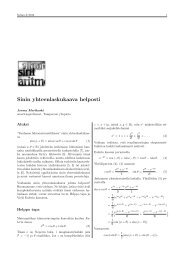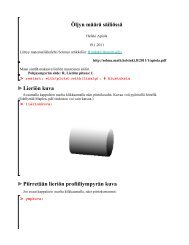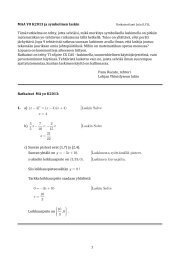Non-Newtonian turbulence: viscoelastic fluids and binary mixtures.
Non-Newtonian turbulence: viscoelastic fluids and binary mixtures.
Non-Newtonian turbulence: viscoelastic fluids and binary mixtures.
Create successful ePaper yourself
Turn your PDF publications into a flip-book with our unique Google optimized e-Paper software.
Chapter 2<br />
Polymer solutions<br />
It is known since the 1940’s that the addition of small amounts of polymers to<br />
a fluid can produce dramatic changes of its properties. Due to their molecular<br />
structure, polymers have elastic degrees of freedom which must be taken into account<br />
in the description of the mechanical response of the fluid to which they are<br />
added. Indeed, while for a <strong>Newtonian</strong> fluid the stress is proportional to the deformation<br />
rate, the coefficient being the viscosity, in an elastic material the stress<br />
is proportional, via the Hook modulus, to the deformation itself. A solution of a<br />
<strong>Newtonian</strong> fluid <strong>and</strong> polymers can be thought of as a mixture of these idealized<br />
situations, because it presents features of both viscous <strong>and</strong> elastic materials, <strong>and</strong><br />
it is thus called a <strong>viscoelastic</strong> fluid.<br />
The above behaviour manifests itself in a variety of spectacular phenomena.<br />
Among these, to have an idea of the different response of <strong>Newtonian</strong> <strong>and</strong> viscoealstic<br />
<strong>fluids</strong>, let us briefly consider the Weissenberg effect [31]. When a <strong>Newtonian</strong><br />
fluid is put in rotation, it is pushed away from the center by the centrifugal force<br />
<strong>and</strong> a dip appears on the free surface, which takes the shape of a paraboloid. On<br />
the contrary, when a rotating rod is inserted in a tank filled with a <strong>viscoelastic</strong><br />
fluid, the fluid tends to climb up the rod, as in fig. 2.1.<br />
The effects produced by polymer additives in <strong>fluids</strong> range from the change<br />
of flow stability <strong>and</strong> transition to <strong>turbulence</strong>, to the modification of mixing properties<br />
<strong>and</strong> of transport of heat, mass <strong>and</strong> momentum. The vast bibliography by<br />
Nadolink <strong>and</strong> Haigh [32] gives an idea of the efforts devoted to the underst<strong>and</strong>ing<br />
of <strong>viscoelastic</strong> <strong>fluids</strong>’ behaviour, which is clearly of interest both from a purely<br />
theoretical <strong>and</strong> a more application-oriented point of view.<br />
In this chapter the basic dynamics of polymers in <strong>fluids</strong> is introduced. Starting<br />
from a "microscopic" description in terms of single polymer dynamics, full hydrodynamic<br />
models that are typically used to describe <strong>viscoelastic</strong> solutions will<br />
be constructed. Finally, the phenomena of drag reduction <strong>and</strong> elastic <strong>turbulence</strong><br />
will be briefly introduced, as they will be discussed in further detail, or referred<br />
31



